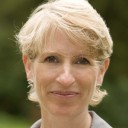Flying past the snowy fields of southern England on the way to a chilly Brussels – it’s forecast time again for Ariadne. For the second year running, a network of more than 540 social change and human rights funders from 25 countries are gathering to collectively think about what the next 12 months will bring for donors and grant-makers. We hope it will be an exercise that gives all funders food for thought and helps them to plan ahead.
In the words of Gerry Salole, Chief Executive of the European Foundation Centre, ‘It’s not about what predictions you get right, it’s like a temperature gradient: are people paying attention to the right areas? A forecast will really help us develop that lens’. A quick look back at last year shows that many of the issues dominating people’s thoughts have remained the same, if not at the top of the agenda.
As we go into the round of forecast meetings to consult Ariadne participants and other friends of the network across Europe, what trends are emerging as central to grant makers in 2016? All funders that have contributed so far largely agree that the over arching issue for them will be global instability, which is driving a number of important trends: conflict and terrorism, the creation of millions of new refugees and an ever more restrictive environment in which funders have to work.
The migration crisis is providing grant-makers and independent philanthropy with its biggest challenge for a generation. Forced migration in 2015 is on course to break all previous records, with 60 million people thought to have fled their homes by the UN, or, putting it another way, one in every 122 people on the face of the earth is now on the move. The big questions for funders in 2016 are how should they intervene, what can they do best, and are they up to the task?
From responses so far, most funders believe it is up to governments and international institutions to manage the immediate humanitarian crisis, and the role for independent philanthropy is to address the medium and long term. This includes helping new arrivals integrate into European societies and easing their transition into their new homes: work thrown into stark relief by the events of New Year’s Eve in Cologne, Hamburg and other German cities.
A major difficulty for cross- border funders in the year ahead will be dealing with the intensely negative and difficult environment created by the plethora of restrictions and regulations governing the international movement of money and the operation of civil society. Nothing is getting better about the Closing Space for Civil Society, and a lot is getting worse, but this is the year, funders hope, that will show them responding to this much more collectively and strategically through the Funders Initiative for Civil Society, which is expected to come into existence in the next few months.
Cuts in public spending across Europe, particularly in the UK and the Netherlands, are causing a great deal of pain. In the UK, for the first time in recorded history, grants from independent philanthropy to social needs NGOs are now larger than grants from government. Many funders feel ill at ease in assuming the role of the main social safety net in these countries, but think there is little alternative. Interestingly the mood is different in France, where for so long philanthropy has been viewed with suspicion: French philanthropy has a spring in its step, it sees itself being offered a chance to prove its worth to society in difficult times. This stands in contrast to colleagues in the UK and the Netherlands.
Set against this gloom is the underlying trend of more money and different kinds of money coming into the sector. Alternative finance in 2016 is set to tip, say Ariadne participants, from being a minority interest to being part of the mainstream. The Ariadne Forecast has contributions this year from many different countries, with each at a different stage in its conversion to understanding and deploying alternative finance mechanisms in philanthropy.
But then that is what the Ariadne forecast is about. It is a chance for funders who spend much of the year dealing with granular material in their own field of focus, to lift their heads from their desks, see the big picture, and discover the important trends and plan ahead.
Jo Andrews is director of Ariadne.






Comments (0)